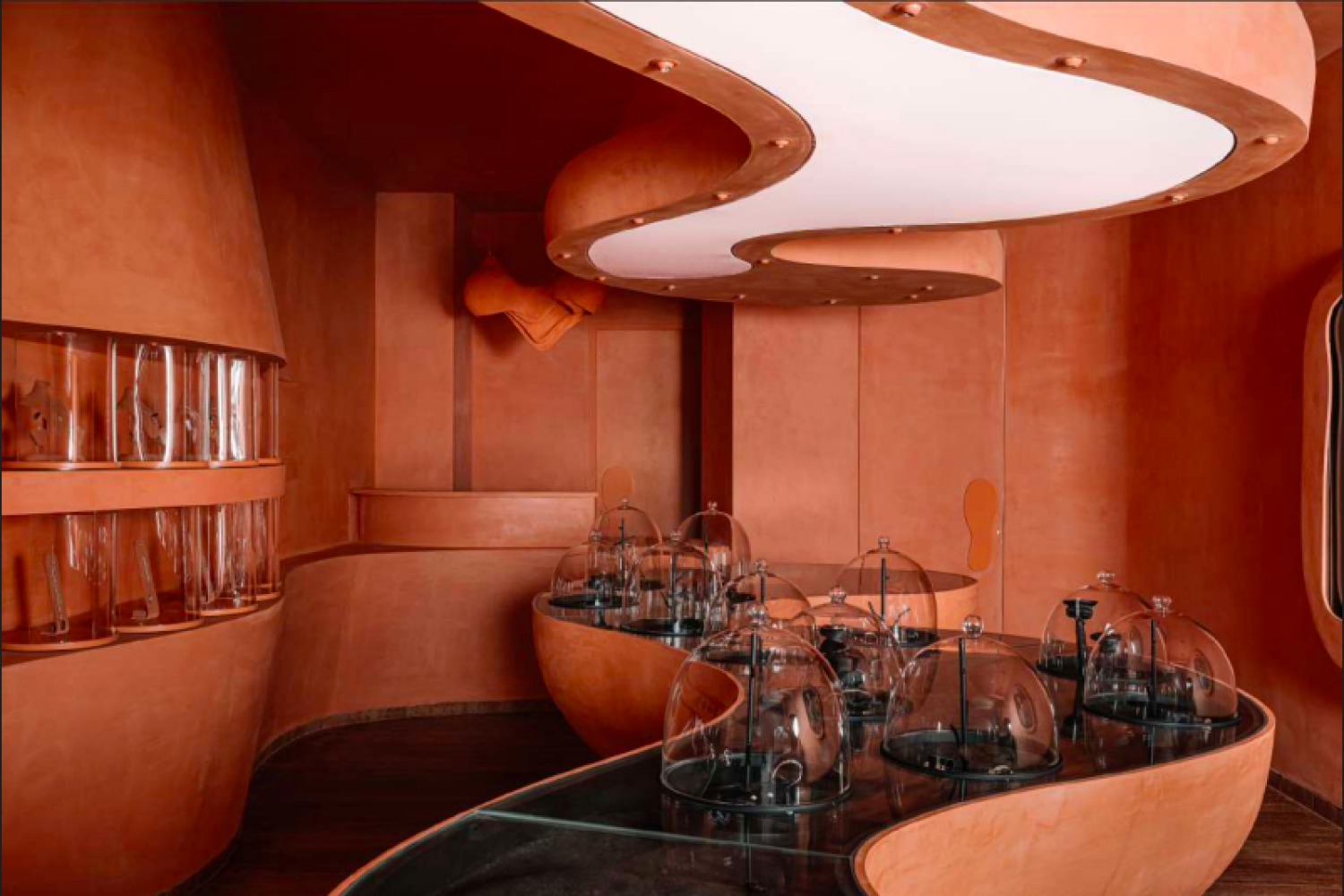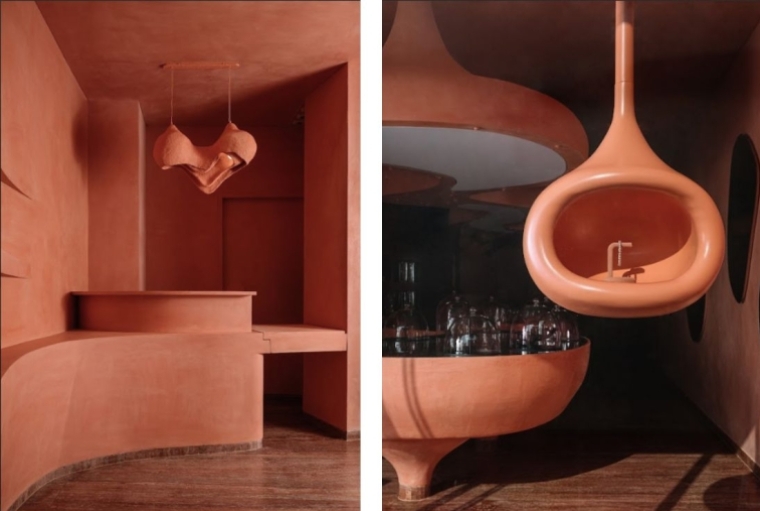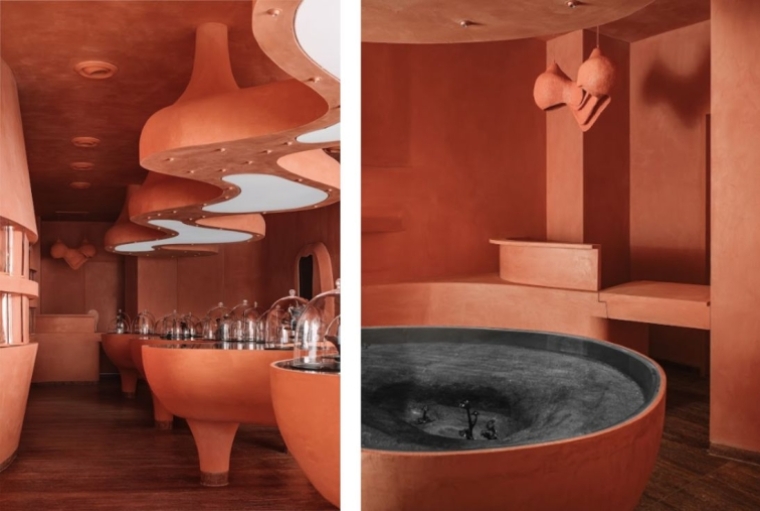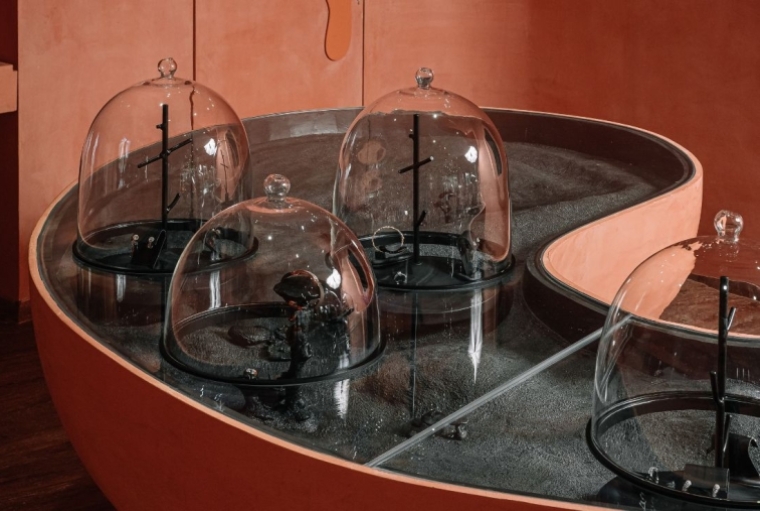

In the bustling streets of Ahemdabad, amidst the glittering showcases of numerous jewellery stores, one particular establishment stands out—not just for its exquisite collection but for its innovative design. The architectural firm, MuseLab, spearheaded the transformation of Lakhtarwala Jewellers into a space that defies convention and invites visitors into a world of terracotta allure.
Jasem Pirani and Huzefa Rangwala, the creative minds behind this project, shared insights into the conceptualization and execution of this unique retail experience.

Embracing Terracotta
"Terracotta was a pretty conscious decision for three reasons," they explained. "One is that it worked with the branding colors of the company. Lakhtarwala Jewellers is a 75-year-old company, and they started with their first retail outlet for lab-grown diamonds, for which they did a rebranding exercise—and the color was pretty close to terracotta." But the choice of terracotta wasn't merely about aesthetics; it was about creating a lasting impression. Pirani and Rangwala elaborated, "We definitely wanted to create an impact on that high street because there were five other competitors on the same street, and we wanted to ensure that whether it's during the day or at night, people had to be sucked into the store." Thirdly, "there is a certain way that diamonds are mined—in a certain topography. We wanted to create a palette that resonated with the excavation process."

Creating an Immersive Environment
Creating an environment that transcends the ordinary was central to MuseLab's vision. They also wanted to make sure that even the salespeople who are working over there should feel inspired to make that extra effort in their sales—just because of how it is designed. Central to the design is the island at the center, which redefines the typical shopping experience. "There’s an island at the center, and you can walk around it. It's a forced circulation, if let's say, there are five desks in a traditional format, I might just go to one table, I might see the product, and I might go back if I don't like it. But what our design does is that it allows people to have a forced navigation or circulation around the entire island." This innovative design encouraged a forced circulation, ensuring that visitors engaged with every corner of the store. By enabling theatrical interactions and conversations, MuseLab transformed the act of purchasing jewelry into an immersive experience.
Drawing Inspiration from Nature
The design narrative drew inspiration from diverse natural habitats, including underwater ecosystems and lunar landscapes. The central island, reminiscent of a community table, featured deliberate indents for intimate conversations between customers and salespersons. Collaborating with Shailesh Rajput Design Studio, MuseLab brought this vision to life with mushroom-like columns and a lunar landscape within the vessel, made with charcoal. An army of ring bearers conceptualised by Rajput. The incorporation of aquatic creatures and cloches added an element of wonder, transporting visitors to a realm of fantasy and exploration.

Navigating Challenges
Undertaking a project of this magnitude was not without its challenges. MuseLab had never designed a jewelry store before, necessitating extensive research and collaboration. Lighting, security, and operational efficiency were critical considerations, requiring meticulous planning and execution. Communicating conceptual ideas to stakeholders posed another hurdle, yet MuseLab's perseverance and innovative solutions ensured the project's success. "It was conceptually very strong," reflected Rangwala. "But now imagine explaining this to a 65-year-old Gujarati businessman. I literally had to have my Gujarati language game on point for this."
Understanding the inherent risks associated with jewelry retail, they also implemented stringent security measures. "We planned it in a way that each morning and evening, the store can open and close within a tight timeframe of 20 minutes, the staff must assemble and disassemble the store seamlessly." Beyond security protocols, they also focused on optimizing the layout of the store for efficient operations. Adequate table space was crucial, facilitating smooth communication between the seller and the customer. Additionally, sufficient display space was allocated to showcase the jewelry elegantly.

What's Next
"We recently completed a project nestled in the heart of old Bombay. Here, rows of warehouses dating back to the 1930s and 1940s line the streets, creating a scene reminiscent of a bygone era. At 7:30 a.m., as the day begins, the streets come alive with activity. Workers from the warehouses can be seen bathing, brushing their teeth, sipping chai, and engaging in conversations—a vibrant tableau that reflects the authentic essence of Bombay." This enclave, hidden amidst the towering high-rises, remains a hidden gem unknown to many. Their project involved the restoration of one such warehouse, transforming it into a headquarters for water solutions. The challenge lay in preserving the heritage while infusing modern functionality. MuseLab tells us "We embarked on a journey of reuse and upcycling, tearing down the existing structure and repurposing up to 75% of the materials. From the outside, the warehouse retains its original façade, concealing the innovative interventions within. Inside, the space stretches 11 feet in width and 75 feet in length, demanding creative solutions to maximize natural light and ventilation. Our approach to sustainability went beyond mere certification. While solar panels seemed an obvious choice, we opted for a pragmatic solution—leveraging the city's electricity grid proved more cost-effective and environmentally sound."
Looking ahead, MuseLab continues to push boundaries with upcoming projects that promise to redefine spatial experiences. From restoring old warehouses to designing rural schools, their portfolio reflects a commitment to creativity, sustainability, and community engagement.
Words Paridhi Badgotri
Date 25.04.2024